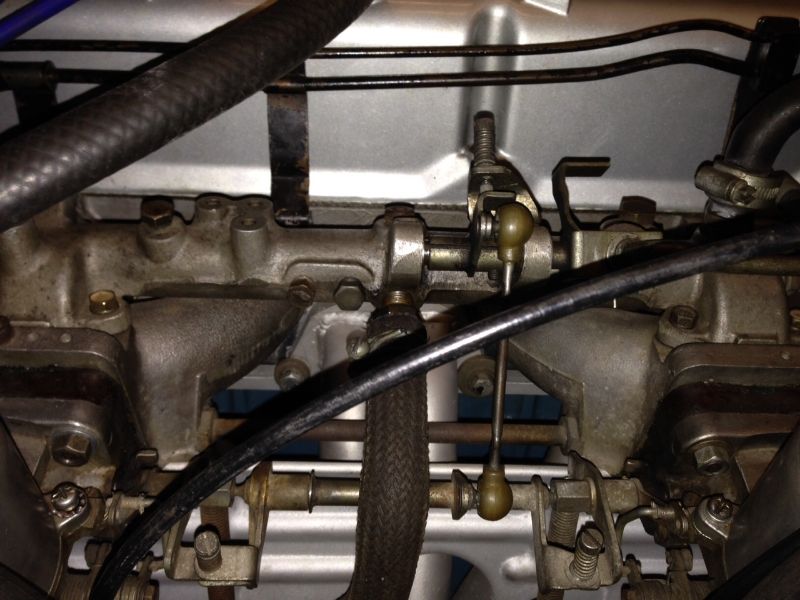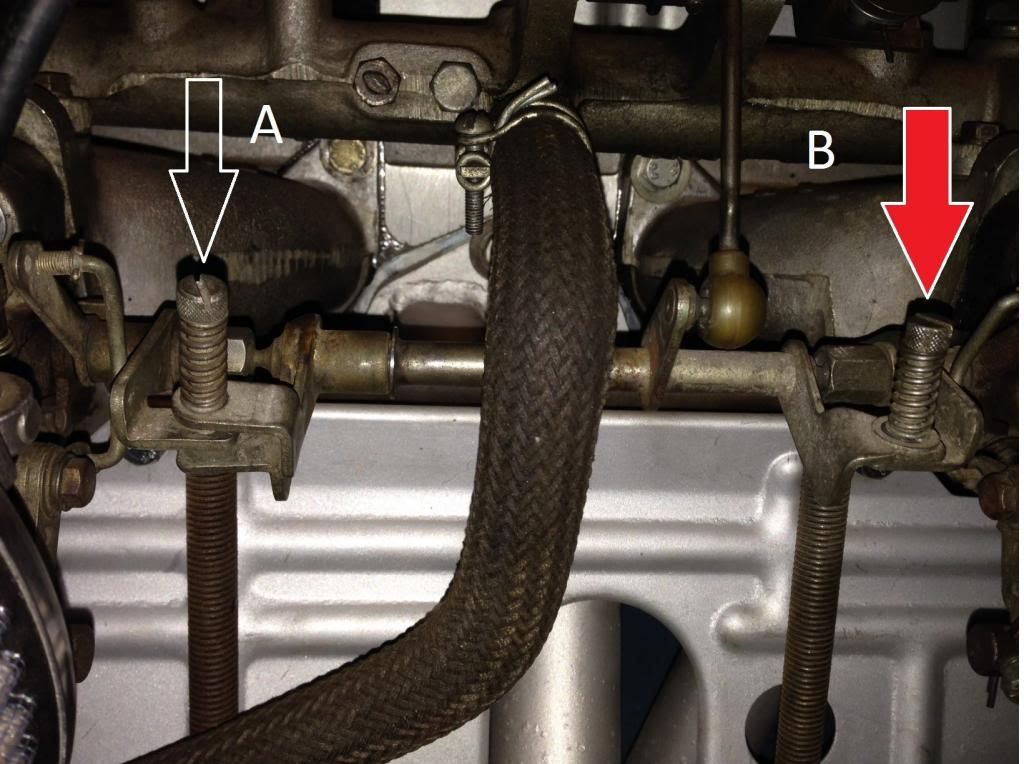Ian
If you need a guy who knows SUs, try Alan Roddy of Roddy's Garage Ballymoney
From what you've said the jets should be set, as the car ran perfectly before, hence it's most likely to be the carb balance that needs sorted
Here are some tips on setting up the linkage. If you don't have a carb balancer, use a piece of tube held to the ear with the other end at the car mouth and you can hear the difference in the air speed in each carb, you'll be surprised how accurate this can be

OK, here is a pic of my linkage (won't be as clean as yours I'm sure !!). Anyway the important bit in this pic, is the screw at the centre top of the pic, which sets the idle speed, screw this in until it touches the stop on the linkage and then give it another turn or maybe two, until you get the carbs balanced and then you can turn it back or forwards to achieve the preferred idle speed
The next shot shows the Idle screw on the carb itself these are actually redundant as the previous screw does their job, so screw them back until you get the carbs balanced, you can then turn them back down to provide an additional throttle stop later on. They are on the linkage side of each carb
OK on to the Balance bar, Screw A pushes on the front carb, and this has a double prong that fits snuggly over the throttle lever of that carb, on my carbs the screw is turned to be finger tight on the lever, just about clamping it, not screwed really tight.
Screw B pushes the rear carb throttle and this screw has only a prong over the top of the lever and this is the screw you use to balance the carbs, by screwing it up to reduce the rear carb opening or down to open it up
So if the rear carb is not sucking as fast as the front carb, Screw B needs to be screwed down until it brings the air speed up to match the front carb.
Good luck



